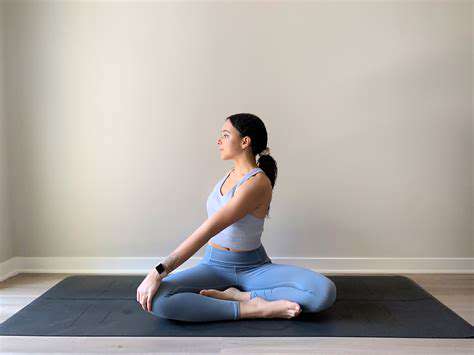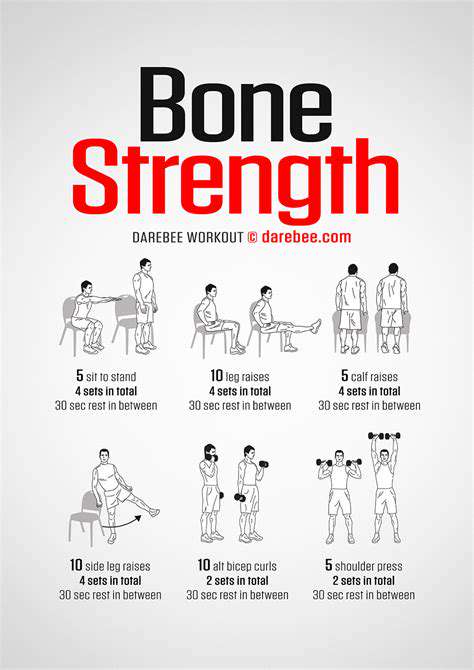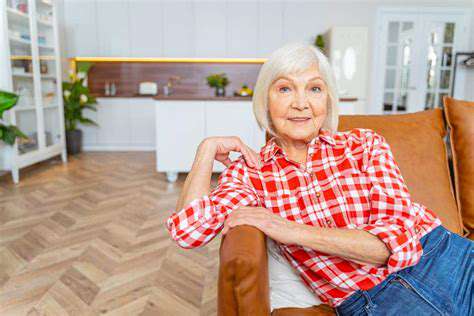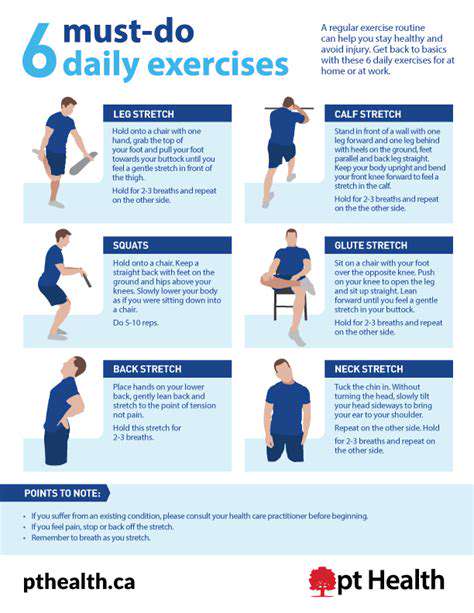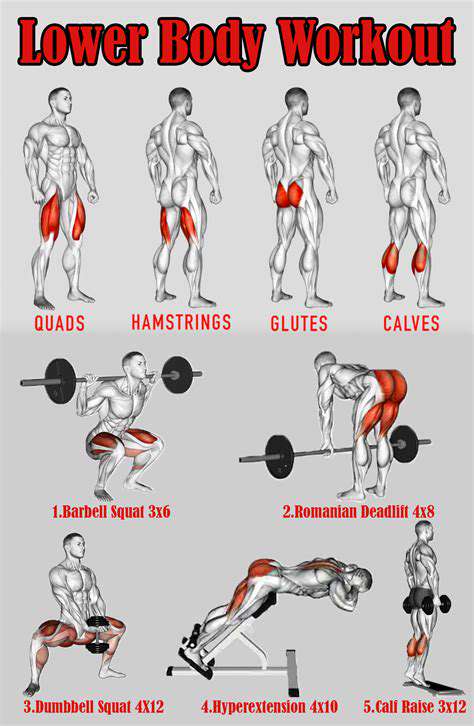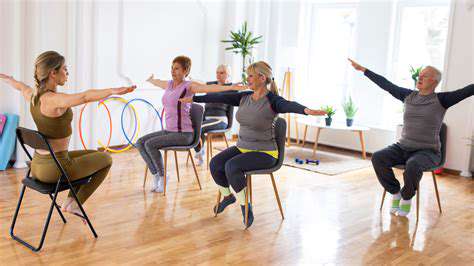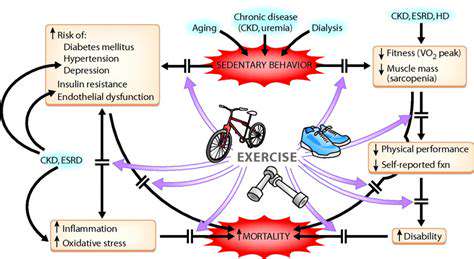Chair Yoga for Seniors with Knee Pain: Safe and Effective Poses
Chair yoga offers a wonderful solution for those struggling with knee discomfort or mobility challenges. This accessible form of movement therapy adapts traditional yoga principles to seated positions, making it ideal for various fitness levels. The combination of mindful breathing and gradual movements helps restore knee function while minimizing strain on vulnerable joints. Many find this approach helps them maintain an active lifestyle despite physical limitations.
Medical professionals frequently recommend this method during rehabilitation from knee procedures, as it enables progressive strength building without compromising recovery. The chair's stable surface provides essential support for those who might otherwise struggle with balance during standing exercises.
Benefits of Chair Yoga for Knee Pain
Regular participation in chair-based movement therapy yields multiple advantages for knee health. The practice enhances synovial fluid circulation within joints, reducing stiffness and promoting natural lubrication. Targeted movements systematically strengthen the quadriceps and hamstrings, creating a protective muscular framework around vulnerable knee joints. This muscular support significantly decreases injury risk while improving long-term joint integrity.
The practice also incorporates stress-reduction techniques. The synchronized breathing patterns and measured movements help alleviate psychological tension that often exacerbates physical discomfort. This comprehensive approach addresses both the physical and emotional aspects of chronic knee conditions.
Getting Started with Chair Yoga
Embarking on this therapeutic journey requires minimal preparation. Select a sturdy, armless chair that allows your feet to rest flat on the floor comfortably. Choose a quiet space with sufficient room to extend your limbs without obstruction. Proper lighting and ventilation create an ideal practice environment.
Begin each session by centering yourself through diaphragmatic breathing. This foundational technique oxygenates tissues while calming the nervous system. Mastering breath control enhances the therapeutic effects of subsequent movements.
Key Poses and Modifications for Knee Health
The practice includes various adaptable positions tailored to individual capabilities. Common variations include seated forward bends, gentle rotational movements, and controlled leg extensions. Always honor your body's signals and adjust positions to maintain comfort while avoiding strain. Those with existing knee conditions should consult healthcare providers before beginning any new movement regimen.
The chair's stable platform enables safe execution of these movements. This support system allows practitioners to focus on proper alignment while protecting vulnerable joints. Such controlled conditions make the practice particularly suitable for those managing knee-related concerns.
Safety Precautions and Considerations
Prioritizing joint safety remains essential when practicing therapeutic seated movements. Medical clearance proves particularly important for individuals with chronic knee conditions. Discontinue any movement that causes sharp or persistent discomfort in your joints. Progress gradually, allowing your body to adapt to increasing intensity over multiple sessions.
Adaptation remains key to safe practice. Modify positions as needed to accommodate your unique physical requirements. Maintain spinal alignment and concentrate on movement quality rather than quantity. Protecting knee health should remain the primary focus throughout your practice.
Key Benefits of Chair Yoga for Seniors with Knee Pain
Improved Flexibility and Range of Motion
Seated movement therapy incorporates carefully designed stretches that gradually restore joint mobility. These controlled exercises specifically address age-related stiffness in weight-bearing joints. Consistent practice helps maintain functional movement patterns essential for daily activities like dressing and household tasks.
The methodical approach to stretching allows seniors to safely regain lost flexibility. This improved mobility often enhances balance and postural alignment, reducing strain on vulnerable joints during routine movements.
Reduced Knee Pain and Inflammation
Therapeutic seated exercises employ strategic movements that strengthen supportive musculature without overloading joints. This balanced approach helps manage discomfort while promoting healing circulation. The rhythmic nature of the movements encourages nutrient-rich blood flow to affected areas.
Incorporated mindfulness techniques help mitigate stress responses that can intensify inflammatory processes. This dual approach addresses both physiological and psychological contributors to joint discomfort.
Enhanced Balance and Stability
The practice includes carefully sequenced movements that challenge and improve equilibrium. Age-related balance decline becomes particularly manageable through these seated exercises. The chair's support provides essential safety during balance training.
These controlled movements rebuild proprioceptive awareness and muscular coordination. Improved stability significantly reduces fall risk while increasing confidence in mobility.
Stress Reduction and Improved Mood
The integration of breath awareness and gentle movement creates a meditative experience. This combination effectively lowers cortisol levels while promoting endorphin release. For seniors managing chronic discomfort, this emotional relief proves particularly valuable.
Improved Cardiovascular Health
While not aerobic in nature, the practice supports circulatory health through controlled movement sequences. The emphasis on full, rhythmic breathing enhances oxygen exchange and vascular function. These benefits contribute to overall cardiovascular maintenance.
Increased Flexibility in Daily Activities
The functional improvements gained through regular practice directly translate to easier performance of routine tasks. Targeted movements address specific limitations in lower body mobility. This practical benefit significantly enhances independence and quality of life for aging adults.
Safe and Effective Chair Yoga Poses for Knee Pain
Chair Yoga for Knee Pain Relief: A Gentle Introduction
Seated therapeutic movement provides seniors with knee concerns a safe pathway to improved mobility. The chair's support allows for proper joint alignment during exercises. This adaptation makes yoga principles accessible while respecting physical limitations.
Seated Forward Fold: Relieving Back and Knee Tension
This position gently elongates posterior chain muscles while decompressing lumbar vertebrae. Maintain spinal alignment as you hinge forward from the hips. The controlled release helps alleviate tension in areas commonly affected by knee discomfort.
Chair Spinal Twist: Enhancing Flexibility and Circulation
Rotational movements improve spinal mobility while stimulating abdominal organs. The twisting action creates beneficial compression and release in the torso. This movement sequence enhances overall body awareness and coordination.
Chair Knee Stretches: Targeting Specific Knee Pain Points
Isolated knee movements help maintain joint range of motion. Controlled flexion and extension exercises preserve functional movement patterns. These targeted actions help prevent stiffness while promoting synovial fluid circulation.
Chair Leg Lifts: Building Strength and Supporting Knee Health
Progressive resistance exercises strengthen stabilizing musculature. Focus on controlled elevation and lowering of each limb. This systematic approach builds endurance in muscles critical for knee support.
Chair Cat-Cow Pose: Gentle Spinal Movement and Flexibility
This fluid sequence promotes spinal health through alternating flexion and extension. Coordinated breathing enhances the movement's therapeutic effects. The gentle motion helps maintain vertebral mobility important for overall posture.
Cool-Down and Relaxation: Restoring Balance and Well-being
Conclude each session with intentional relaxation. Focused breathing helps integrate the practice's benefits. This mindful conclusion allows the nervous system to assimilate the therapeutic effects.
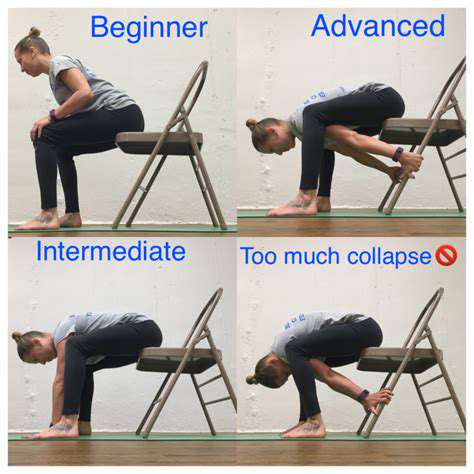
Chair Spinal Twist
Chair Spinal Twist Benefits
This rotational movement offers multiple therapeutic advantages. The gentle torsion improves intervertebral mobility while stretching paraspinal muscles. Regular practice can enhance digestive function through visceral stimulation.
Proper Alignment for the Twist
Maintain erect spinal positioning throughout the rotation. Ground both feet firmly while initiating the movement from the torso. This alignment protects vulnerable spinal structures while maximizing therapeutic benefits.
Modifying the Twist for Knee Pain
Adjust positioning to accommodate sensitive knees. Additional cushioning can reduce pressure on affected joints. Limit rotation range to stay within comfortable parameters.
Step-by-Step Instructions
Begin with proper seated posture. Inhale to prepare, then exhale into the rotation. Maintain the position for several complete breath cycles before releasing.
Breathing Techniques During the Twist
Coordinate breath with movement for enhanced effects. Deep inhalations oxygenate tissues while exhalations facilitate deeper rotation. This synchronized breathing optimizes the pose's benefits.
Safety Considerations for Seniors
Medical consultation remains essential before beginning new exercises. Monitor for any discomfort during practice. Gradual progression ensures safe adaptation to the movements.
Combining with Other Chair Yoga Poses
Integrate twists within comprehensive movement sequences. Alternate with forward bends and lateral stretches. This balanced approach addresses multiple aspects of mobility.
Chair Yoga for Seniors with Knee Pain: Precautions and Considerations
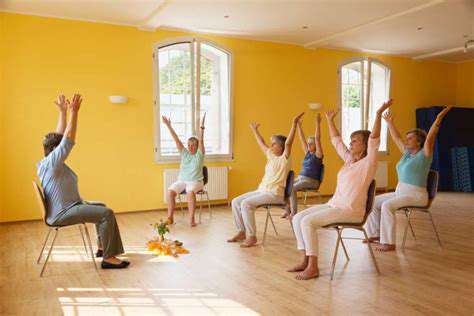
Chair Yoga Poses for Seniors with Knee Pain
Therapeutic seated movements provide seniors with knee concerns a safe exercise option. These adaptable positions accommodate various mobility levels while promoting joint health. Proper technique execution helps manage discomfort while preventing further joint compromise. Always respect physical limitations during practice.
Warm-up Exercises
Preparatory movements prime the body for subsequent exercises. Gentle joint rotations and muscle activations increase tissue pliability. This preparatory phase significantly reduces injury risk during the main practice. Allocate sufficient time for thorough warm-up sequences.
Seated Forward Fold
This fundamental position stretches posterior chain muscles. Maintain spinal integrity throughout the movement. The controlled release helps alleviate tension in areas commonly affected by knee issues.
Chair Spinal Twist
Rotational movements enhance spinal mobility and core engagement. The twisting action stimulates abdominal organs while improving torso flexibility. This movement proves particularly beneficial for those with concurrent back concerns.
Chair Leg Raises
Controlled limb elevation strengthens hip and knee stabilizers. Focus on quality of movement rather than quantity. Regular practice improves functional strength important for fall prevention.
Knee-Friendly Stretches
Gentle range-of-motion exercises maintain joint health. Avoid forcing movements beyond comfortable limits. These targeted actions help preserve mobility while respecting tissue integrity.
Cool-down Exercises
Gradual transition to resting state prevents post-exercise stiffness. Incorporate gentle stretching and breathing exercises. Proper cool-down protocols enhance recovery and reduce muscle soreness.
